How Steven Gerrard's Rangers dominated Neil Lennon's Celtic in Old Firm win
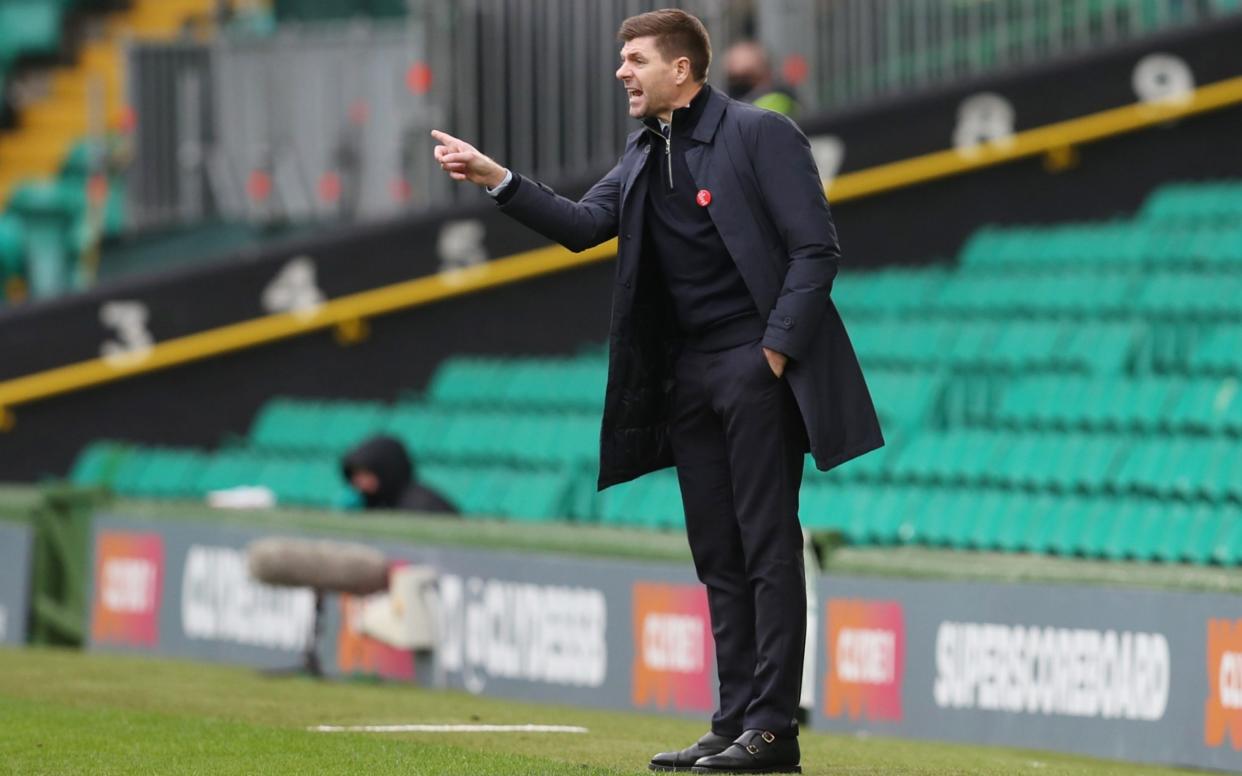
Rangers were the better team by far in the first Glasgow derby of the season, with Steven Gerrard orchestrating a victory which will have caused Neil Lennon genuine concern. And if it hasn't, it certainly should have. Celtic looked devoid of ideas and were outplayed, out-thought, and out-fought – was this a one-off we can attribute to a lack of experience in the starting XI?
Celtic's nine league games undefeated before Saturday's Old Firm derby suggests they'll probably be fine, and it should not be ignored that they were without several key players or any first choice striker, but this was a comprehensive defeat in their first real challenge of the season.
How Gerrard won the tactical battle
Lennon's preferred tactical system is a possession-based 3-5-2. Celtic have the vast majority of possession in every game they play – a 63.6 per cent average in the Premiership is the most of any team this season – with width created by attacking wing-backs and centre-backs expected to carry the ball into midfield to create overloads. With two strikers up top, wide players have more targets to aim and the likelihood of profiting from second balls increases.
The midfield is made of a destroyer (Scott Brown), someone to set the tempo and ping the ball around (Callum McGregor), and another who helps in defensive phases and pushes just behind the forwards in attack, in a role somewhere between an eight and a 10 (Olivier Ntcham).
To counter this, Rangers set up in a narrow 4-3-3, won the midfield battle and easily outnumbered their hosts in both defensive and attacking phases. Flooding the midfield ensured that Celtic had to focus their play wide to a wing-back to avoid losing possession in congested parts of the pitch, and with the wing-back the only player in that vertical space, it became easy to isolate them and shut down attacks, as illustrated in this diagram:
Celtic's build-up became so predictable there was little need for Rangers to press them particularly high up the pitch, so Gerrard's forwards sat just off them to protect central space and encourage one of Celtic's centre-backs to attempt a long pass forward, or wide, where they could then isolate the winger and win the ball back. Below, Shane Duffy has the ball in the third minute of the game with as much time as he needs to pick a pass.
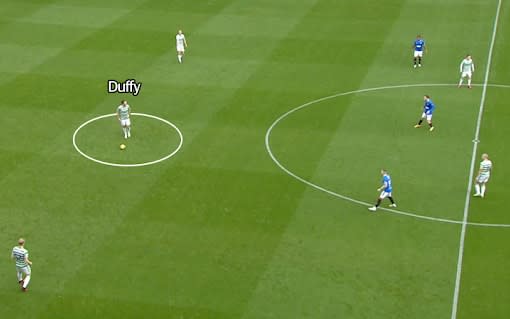
Duffy's pass is struck into the right channel and Filip Helander tracks Patrick Klimala's run from striker to right wing. Borna Barisic holds position so Rangers maintain a back four, Glenn Kamara shifts over to defend against Jeremie Frimpong and Celtic have a difficult three against three situation in the corner.

Klimala's cross is blocked, the ball bounces to Kamara and he clears. Celtic try to push up and win the second ball but are pushed back by Rangers' midfield block, forced to start again from the back. This time the ball is played out left to Diego Laxalt, who is closed down immediately by James Tavernier.
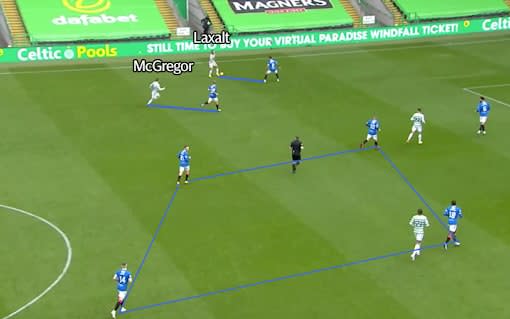
McGregor tries to make an underlapping run but Rangers have their half well covered, the midfield box (above) ensures that play is kept out wide, and so, again, the wing-back feels as though he has to play backwards to keep possession. Laxalt passes safely back to Brown.
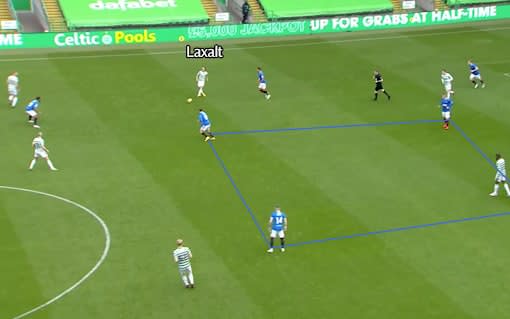
Wyscout's passing map (featuring confusingly coloured blue dots) from the match shows a high concentration of sideways passes between centre-backs and Brown (8), out to a wing-back and back again, with the strikers almost completely detached from the rest of the team.
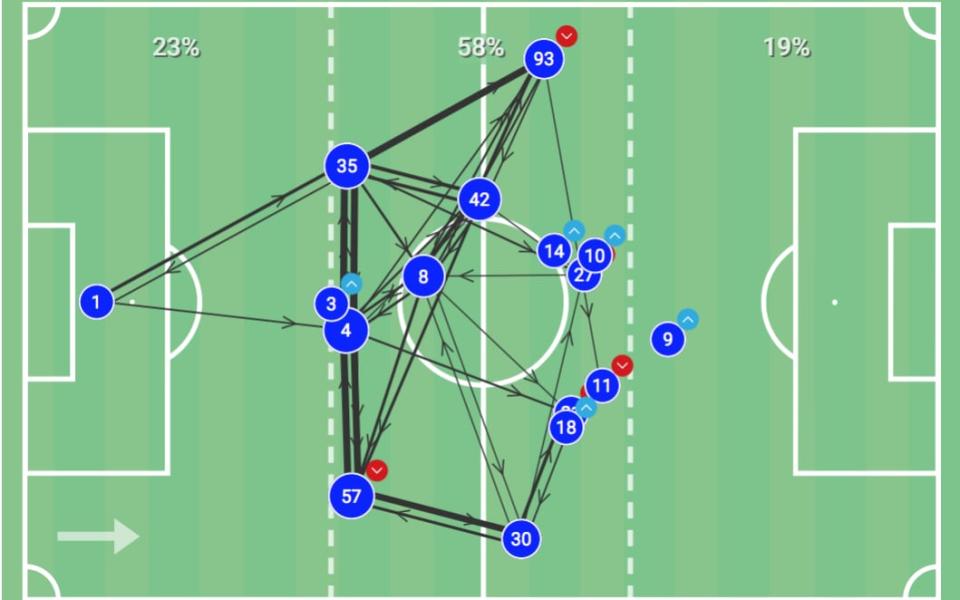
Ntcham was a passenger and rarely in position to affect play, McGregor was marked out of the game and Brown looked like a one-man midfield, helplessly watching the game happen around him. Celtic had more possession but almost all of it was short, sideways passes in their own half or around halfway. They looked toothless.
However, while Rangers passed their way through Celtic with some fluid attacking moves, both of their goals came from set pieces. Connor Goldson's first headed goal was the result of some poor zonal marking in the box, while the second owed much to similarly bad defending from the second phase of a corner. This wasn't a thrashing so much as Rangers taking hold of the match and refusing to let go, the match tactics suffocating their opponents' own setup and the players looking more determined, aggressive and confident throughout.
If Celtic's 3-5-2 works so well the rest of the time, were their problems against Rangers actually just down to player performance?
Who wants it more
Ex-Rangers forward Steven Naismith's analysis of the match focused on the players rather than the tactics.
"Old Firms are first and foremost about who wants it more," he explained on Sportscene. "I've been involved in so many myself as the underdog but you go out with that will to win and fight. Celtic looked more nervous than Rangers, and Rangers seemed in control."
Celtic had more touches, made more passes and attempted more tackles but Rangers made more blocks, committed more fouls, dribbled more often and took more shots – Gerrard's players were well organised but played with an aggression that Celtic seemed unable to match.
There is no question that Brown, McGregor, Ajer and the rest wanted to win but Rangers looked desperate to, and were set up in such a way that maximised their own talents while nullifying the threat of their opponents. Typifying the performance were Scott Arfield and Kamara, whose roles as box-to-box runners caused problems throughout, always willing to take a man on and carry the team up the pitch, with Arfield's five tackles the most attempted by any player on the pitch.
Meanwhile, Duffy's role as ball-playing centre-back made sense for Lennon's tactics but his ability to execute said passes was sorely lacking, punting the ball straight out of play while under no pressure on at least two occasions.
Gerrard's setup gave Rangers the platform to dominate but the players delivered. Lennon's barely turned up but were at a disadvantage tactically and the substitutions made in the second half were like for like, with no adjustments or tweaks to a system which had clearly been sussed out.
Even a slight switch to a 3-4-3 rather than 3-5-2 would have allowed Celtic to overload the wide spaces, as below:
But Lennon didn't budge. Players win games, not managers, after all.
"You don't want to play too much on it and make excuses but you get three strikers not fit enough to start the game, [James] Forrest out, [Christopher] Jullien out, [Nir] Bitton out, we were missing a lot of quality today," Lennon explained after the match. "We still had a good team out there and I felt should have done better."
Had Celtic been able to offer a genuine attacking threat in the form of Odsonne Edouard or Albian Ajeti, players who work the channels, drift into space to link play and who actively affect matches, instead of Klimala and Mohamed Elyounoussi, who drifted harmlessly on the periphery at Celtic Park, their long passes from the back might have been more effective, the Rangers defence would have been a lot more worried, and space would have opened up elsewhere for the players denied it.
Lennon's 3-5-2 system works but against Rangers and without Ryan Christie, Edouard, Ajeti, and Forrest – four of their best players – it didn't. When the opposition is settled, confident, strong and organised, the manager needs his players to step up and take responsibility on the pitch. Celtic struggled and whether that is because the tactical set up didn't suit the match or the players failed the system is something Lennon must figure out and address to ensure his side aren't outplayed by their title rivals in future meetings. Rangers now have the psychological advantage. Celtic must ensure they don't slip up any further.

